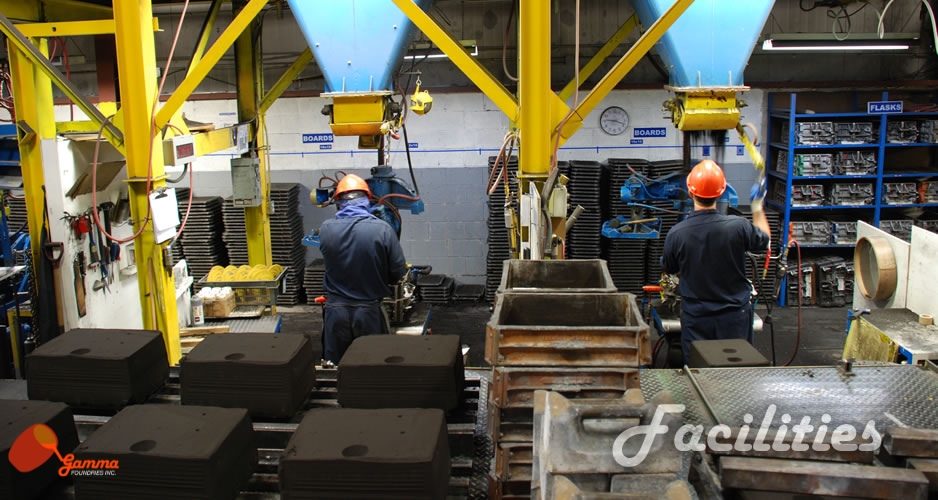Green Sand vs. No-Bake Casting: The Physics Beneath the Foundry
Read time: 5 minutes
At first glance, sand casting might seem like an old-world craft — molten metal, grains of sand, gravity doing its thing. But behind this seemingly simple process lies a deep understanding of physics, thermodynamics, and material behavior. Among its many forms, green sand and no-bake casting stand out as two distinct methods, each shaped by different principles, suited for different challenges.
Two of the most widely used methods in this field — green sand and no-bake casting — use the same elemental ingredient: sand. But what changes is the science of how we hold that sand together, and what that means for the parts we’re trying to build.
Let’s explore how these two casting processes differ — and why your choice might influence how machinery performs here on Earth… and maybe even beyond.
Green Sand Casting: The Primordial Mixture
Green sand isn’t green. It’s a damp mixture of silica sand, clay, and water, and it holds its shape through moisture and pressure — not heat. Think of it like sculpting with the mud of a riverbed: pliable, reusable, and responsive to form.
When molten metal — heated to thousands of degrees Fahrenheit — enters this humble matrix, it’s like watching a star being born in a nebula of sand and gravity. The mold holds steady just long enough for the metal to cool, solidify, and take on its final form.
Green sand molds are:
- Fast to prepare
- Recyclable hundreds of times
- Perfect for producing parts by the thousands — housings, brackets, manifolds — the unsung bones of our machines
But like anything based on water, there are limits: surface finishes are rougher, tolerances looser, and design complexity must bow to simplicity.
No-Bake Casting: Precision Through Chemistry
Now enter the realm of no-bake molds — where the rules change.
Instead of clay and water, no-bake casting uses resins and chemical hardeners — typically phenolic urethane binders — to bond sand particles together. A catalyst triggers the curing process at room temperature. Within minutes, the mold sets without the need for heat. It’s as if the mold chooses to harden itself, guided not by fire, but by chemistry.
This opens the door to stronger molds, cleaner finishes, and more elaborate shapes — all of which matter when you’re casting parts that guide airplanes, pump oil beneath the sea, or support loads with minimal error.
No-bake molds offer:
- Greater dimensional precision
- Cleaner surface detail
- The ability to cast larger, more complex components
The trade-off? It’s slower. More expensive. But when your part has to be right, down to the microns, it’s worth every molecule.
Green Sand vs. No-Bake Casting: Which Method Fits Your Application?
Like choosing the right orbit for a satellite, it all depends on the mission. Here’s a quick guide:
Choose Green Sand if you need:
- High-volume production of low-to-medium complexity parts
- Faster prototyping and tooling flexibility
- Cost-effective manufacturing with recyclable materials
Choose No-Bake if you need:
- Complex geometries and tighter dimensional tolerances
- A smoother surface finish with less post-processing
- Large castings that demand higher mold strength and precision
The Science of Sand Casting: Forces that Shape More Than Metal
What’s astonishing is that this entire process — casting — relies on the same forces that govern stars. Heat. Gravity. Phase transitions. Time. A dance of energy and material.
And just like in the cosmos, every decision made in the foundry changes the outcome: the grain structure, the strength, the resilience of the part. What you pour, how fast it cools, what shape the mold takes — it all matters.
Foundrion’s Approach to Green Sand and No-Bake Casting
At Foundrion, this is the world we live in — where engineering meets elemental science. Foundries like Excal and Gamma operate with both green sand and no-bake capabilities, offering the flexibility to cast everything from high-volume industrial components to complex, large-scale parts. These processes aren’t used because they’re traditional — they’re used because they continue to provide the most effective answers to the engineering challenges of today.
Because in manufacturing, as in the universe, the laws never change — but how you use them is where innovation begins.

